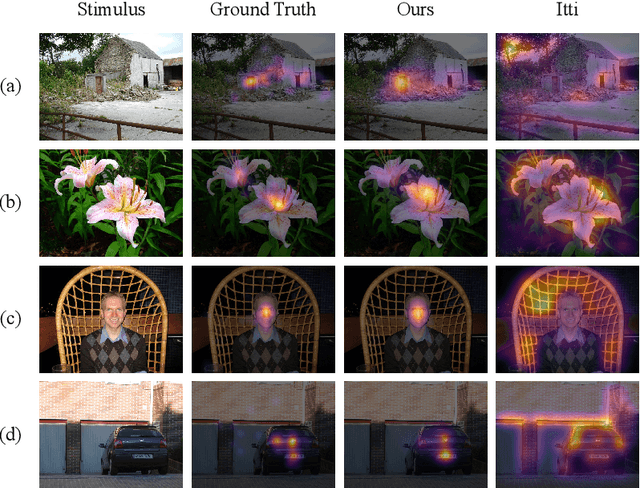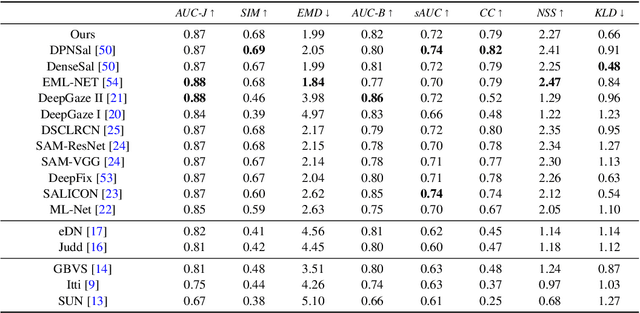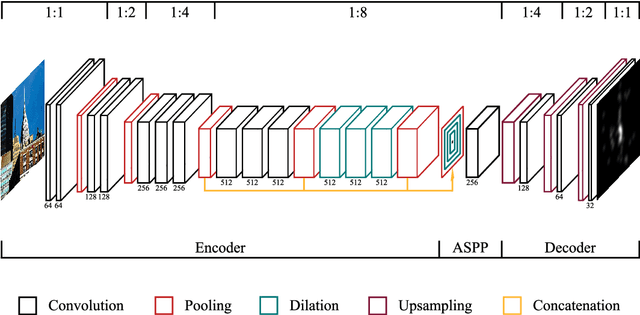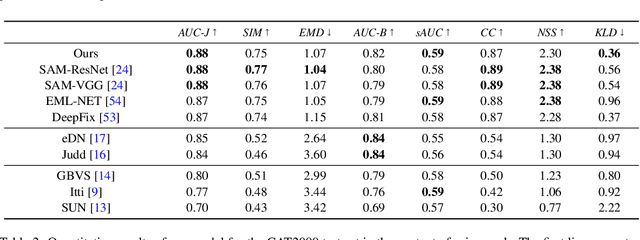Alexander Kroner
Contextual Encoder-Decoder Network for Visual Saliency Prediction
Feb 18, 2019



Abstract:Predicting salient regions in natural images requires the detection of objects that are present in a scene. To develop robust representations for this challenging task, high-level visual features at multiple spatial scales must be extracted and augmented with contextual information. However, existing models aimed at explaining human fixation maps do not incorporate such a mechanism explicitly. Here we propose an approach based on a convolutional neural network pre-trained on a large-scale image classification task. The architecture forms an encoder-decoder structure and includes a module with multiple convolutional layers at different dilation rates to capture multi-scale features in parallel. Moreover, we combine the resulting representations with global scene information for accurately predicting visual saliency. Our model achieves competitive results on two public saliency benchmarks and we demonstrate the effectiveness of the suggested approach on selected examples. The network is based on a lightweight image classification backbone and hence presents a suitable choice for applications with limited computational resources to estimate human fixations across complex natural scenes.
 Add to Chrome
Add to Chrome Add to Firefox
Add to Firefox Add to Edge
Add to Edge